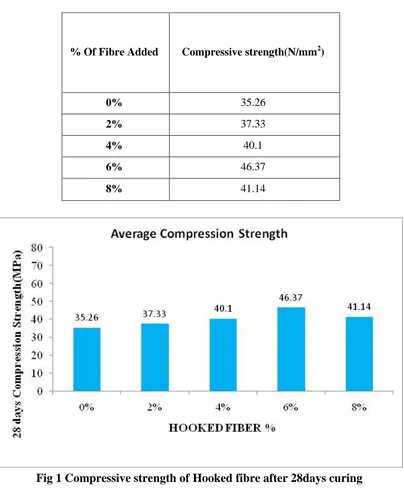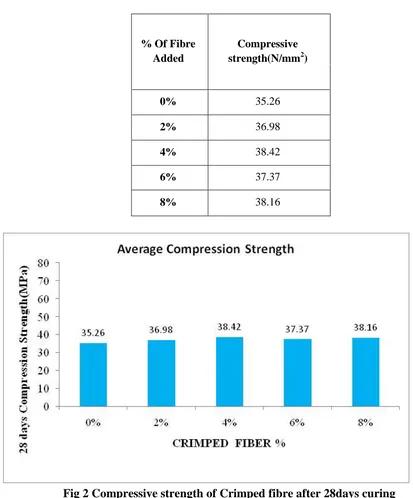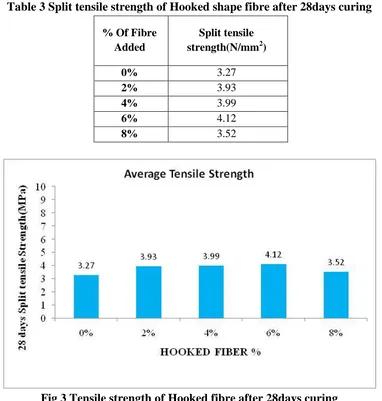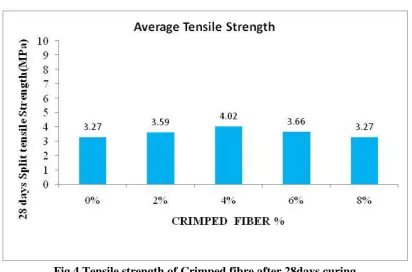26 INTERNATIONAL JOURNAL OF ADVANCES IN ENGINEERING RESEARCH
PERFORMANCE OF HOOKED AND CRIMPED STEEL
FIBERS IN CONCRETE STRUCTURES
RAMAPRABHA.N
1
, JOSE RAVINDRA RAJ.B
2
1PG scholar, Department of Civil Engineering, PRIST UNIVERSITY,
Trichy-Thanjavur Highway, Vallam, Thanjavur- 613 403
2Assistant Professor, Department of Civil Engineering, PRIST UNIVERSITY,
Trichy-Thanjavur Highway, Vallam, Thanjavur- 613 403
ABSTRACT
The large quantity of concrete is used by the construction industry all over the world, probably second largest after water. In India, the conventional concrete is produced by using natural sand as fine aggregate that are available from riverbeds. But diminishing sand resources poses the environmental problem and hence government restrictions on sand quarrying resulted in scarcity and significant increase in its cost. This work presents the study of steel fibre reinforced concrete with artificial sand as fine aggregate.M30 concrete where designed as per IS 10262:2009 with ratio 1 : 2.27 : 3.42 and reinforced with Hooked and crimped fibre in the dosage of 2%,4%,6% and 8% were added. The specimens were prepared, cured and tested for compressive strength and split tensile strength. M-sand was used in hooked fibre and river sand was used in crimped fibre. Tensile and compression Strength was found to be better than conventional concrete.
INTRODUCTION
Concrete in general is a widely used material in the world based on the global usage; it is placed at second position after water. Fine aggregate is an essential component of concrete. The most commonly used fine aggregate is natural sand or pit sand. Therefore construction companies of developing countries are in stress to identify alternative material to lesser or eliminate the demand for natural sand.
Plain concrete contains very low tensile strength and resistance and limited ductility to cracking. Internal micro cracks are inherently present in the concrete and its poor tensile strength is due to the generation of such micro cracks, naturally leading to brittle fracture of the concrete. It has been recognized that the addition of small, closely spaced and uniformly scattered fibres to the concrete would act as crack arrester and would gradually improve its Compressive and tensile strength.
27 INTERNATIONAL JOURNAL OF ADVANCES IN ENGINEERING RESEARCH
Even at 1 % steel fibre content flexural strength of 6.46 N/mm2 was observed against flexural strength5.36 N/mm2 at 0% hence increase of 1.2% flexural strength [1].
OBJECTIVE
1. To find out effect of Hooked and Crimped steel fibre and its shape on properties of FRC
2. To find out the compressive strength of fiber and different fine aggregate based concrete
3. To find out the split tensile strength of fiber and different fine aggregate based concrete
4. To find out optimum percentage of Hooked and Crimped steel fibre in concrete.
MATERIALS
CEMENTThe cement used for this work was OPC of 43 grades. The specific gravity of cement was tested as per IS: 8112 and was found to be 3.15.
RIVER SAND
Natural River sand with specific gravity 2.60 and fineness modulus 2.67 was used for this work
M SAND
Manufactured Sand is sand produced from crushing of stones with specific gravity 2.5 was used in this work
COARSE AGGREGATES
The coarse aggregate used is crushed aggregate conforming to code IS 383:1970. The aggregate passing through 20mm sieve and retained in 16mm sieve is used in this work
WATER
Locally available water without hazardous material is used in this work FIBRES
Hooked and crimped fibers purchased from market were used in this work.
GRADE OF CONCRETE
M30 Grade of concrete with ratio 1: 2.27 : 3.42, fiber Were added for 2%,4%,6%,8% by weight and M-Sand was used in hooked fiber and River sand were used in crimped fiber . TESTING OF SPECIMENS
Compressive strength of cube was done by casting 150mmx150mmx150mm as per IS 516:1959. Split tensile strength was done as per Indian standard.
28 INTERNATIONAL JOURNAL OF ADVANCES IN ENGINEERING RESEARCH
Specification and results are tabulated in table 1 and table 2 . Split tensile strength of Hooked and crimped fibre concrete is done by casting cylinder of size 150mm dia and 300mm height and results are shown in table 3 and table 4. Fig 1 to fig 4 shows the variation of strength between conventional concrete and fibre reinforced concrete
Table 1 Compressive strength of Hooked shapefibre after 28days curing
% Of Fibre Added Compressive strength(N/mm2)
0% 35.26
2% 37.33
4% 40.1
6% 46.37
8% 41.14
29 INTERNATIONAL JOURNAL OF ADVANCES IN ENGINEERING RESEARCH
Table 2 Compressive strength of Crimped shape fiber after 28days curing
% Of Fibre Added
Compressive strength(N/mm2)
0% 35.26
2% 36.98
4% 38.42
6% 37.37
8% 38.16
30 INTERNATIONAL JOURNAL OF ADVANCES IN ENGINEERING RESEARCH
Table 3 Split tensile strength of Hooked shape fibre after 28days curing
% Of Fibre Added
Split tensile strength(N/mm2)
0% 3.27
2% 3.93
4% 3.99
6% 4.12
8% 3.52
Fig 3 Tensile strength of Hooked fibre after 28days curing
Table 4 Split tensile strength of Crimped shape fibre after 28days curing
Percentage Of Fibre Added
Split tensile strength(N/mm2)
0% 3.27
2% 3.59
4% 4.02
6% 3.66
31 INTERNATIONAL JOURNAL OF ADVANCES IN ENGINEERING RESEARCH
Fig 4 Tensile strength of Crimped fibre after 28days curing
CONCLUSION
Based on the investigation for different concentration of steel fibre and the concretethat iscured for 28 days, the following conclusions can drawn,
The compressive strength and split tensile strength of the concrete increases on the addition of steel fibre than the conventional concrete.
On addition of 6% of Hooked shaped fibre the maximum compressive strength of 46.7 N/mm2 is achieved and addition of 4% increased the compressive strength in crimped fiber thus compression strength is more that conventional concrete.
The increase in split tensile strength was found than the conventional concrete.
Optimum dosage of Hooked shape steel fibre that can be added in concrete is 4% and 6%.
Addition of fibers performs as crack arrestor.
The increase in split tensile strength than the conventional concrete at 4% addition of Crimped shaped fibre.
32 INTERNATIONAL JOURNAL OF ADVANCES IN ENGINEERING RESEARCH
REFERENCES
1. IS: 516-1959, Indian Standard Methods of Test for Strength of concrete, Bureau of Indian Standards, New Delhi.
2. IS: 10262-2009, Recommended Guidelines for concrete Mix, Bureau of Indian Standards, New Delhi.
3. IS: 12269-1987, Specifications for ordinary Portland cement 53 grade, Bureau of Indian standards, New Delhi.
4. IS 456: 2000 Plain and Reinforced Concrete - Code of Practice, Bureau of Indian standards, New Delhi.
5. IS 4031: Part 4: 1988 Methods of physical tests for hydraulic cement: Part 4 Determination of consistency of standard cement paste.
6. IS 2386-4 (1963): Methods of tests for aggregates for concrete.



